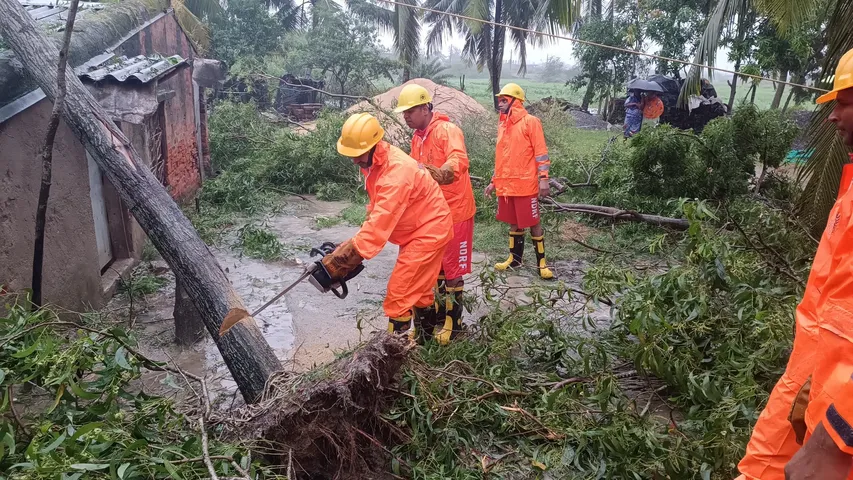Cyclone Dana has unleashed intense weather across eastern India, particularly impacting the coastal regions of Odisha and West Bengal. With winds reaching 110 kilometers per hour (around 70 mph) and heavy rainfall ranging between 50 and 150 millimeters (2-6 inches) in many areas, the storm’s effects have already caused widespread disruptions. The India Meteorological Department issued red warnings for affected areas, urging residents to take precautions against potential flooding and landslides.
Ahead of the storm’s landfall, the Indian government organized an extensive evacuation plan. Approximately 300,000 people in Odisha were moved from high-risk zones, with additional efforts underway to reach over a million across 14 districts. The authorities also enacted preventive measures, closing schools, halting trains, and canceling flights to ensure civilian safety. Temporary shelters have been established in anticipation of the need for safe housing as residents brace for more severe conditions.
Chief Minister of Odisha, Mohan Charan Majhi, reassured citizens of the state’s preparedness, stating, “The government is fully prepared to tackle the situation. You are in safe hands.” Teams from India’s National Disaster Response Force (NDRF), trained specifically for emergency situations like Dana, were pre-positioned across the region to carry out search, rescue, and relief operations. With local emergency teams, they work to address issues like blocked roads, power outages, and flooded areas that could isolate communities.
In addition to immediate concerns, Dana highlights the region’s vulnerability to increasingly powerful cyclones. Over recent years, storms impacting India’s eastern coast have intensified in frequency and strength. Many scientists attribute this trend to rising sea temperatures and changing global weather patterns linked to climate change. This year alone, India has experienced several severe weather events, leading to catastrophic loss of life and extensive economic damage, especially in cyclone-prone areas like Odisha. Last year, the cyclone season was particularly deadly, claiming over 500 lives and causing economic losses exceeding $2.5 billion.
Cyclone Dana is expected to weaken as it moves further inland, but moderate to heavy rainfall is forecast over the weekend in central India. Authorities remain vigilant, urging residents to stay indoors, monitor weather updates, and follow guidance from local officials. The government also plans to assess the storm’s impact on local infrastructure and agricultural areas, with preliminary evaluations indicating that Dana’s flooding could disrupt crop yields in affected districts.
In a broader context, Cyclone Dana serves as a stark reminder of the urgency in enhancing India’s infrastructure to withstand extreme weather. Investments in climate resilience, flood control systems, and efficient evacuation protocols are becoming increasingly crucial. As the storm passes, attention will turn to rehabilitation and longer-term climate adaptation strategies, crucial for the safety of millions who live in the path of such storms.




